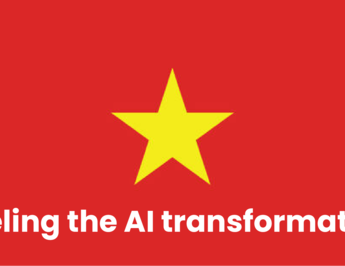
We are encouraged that we find ourselves living in a time when data infrastructure and processing power offer the necessary foundations to fuel truly transformational applications and rapid innovation of artificial intelligence (AI).
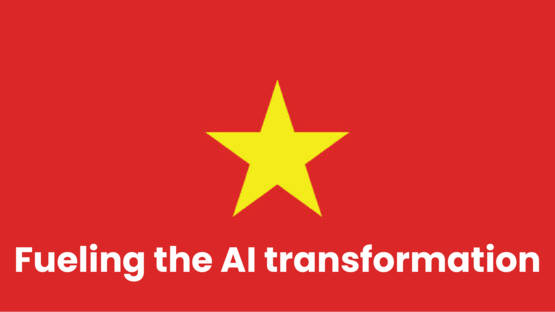
Artificial intelligence has a unique and powerful role to play in meeting many of the challenges presented to us today. We are further encouraged that we find ourselves living in a time when data infrastructure and processing power offer the necessary foundations to fuel truly transformational applications and rapid innovation of artificial intelligence (AI).
The AI market continues to advance rapidly, and leaders across industries consistently report how important this technology is to their future. In fact, in our most recent State of AI in the Enterprise survey 94% of business leaders reported that AI is critical to success over the next five years. Yet challenges persist in achieving outcomes at scale.

For the 2022 survey, we used the same foundational analysis model as for State of AI in the Enterprise, 4th Edition, with slight adjustments to reflect increasing AI activity in the market. Across the 2,620 respondents, the breakdown of performance is shown here.
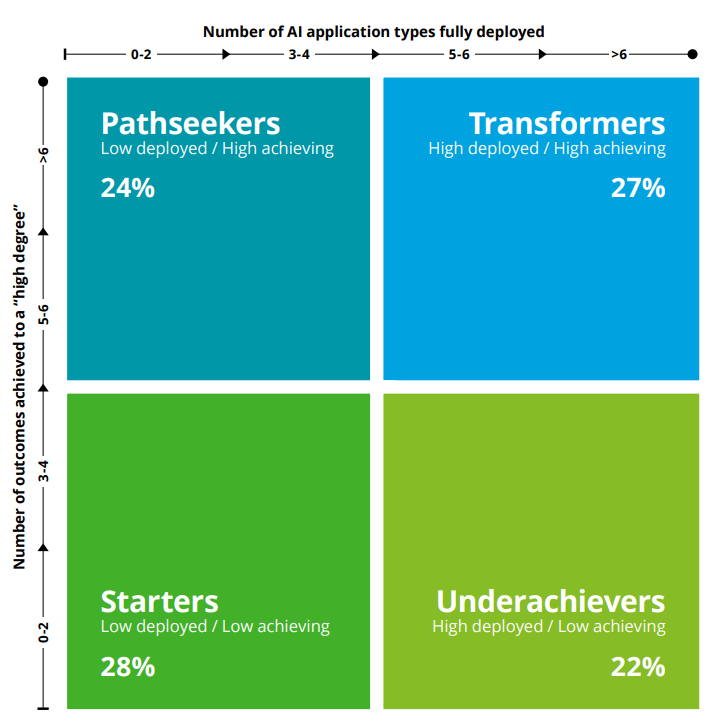
Survey respondents reported varying challenges depending on the stage of AI implementation. When starting new AI projects, the top reported challenge is proving AI’s business value (37%).
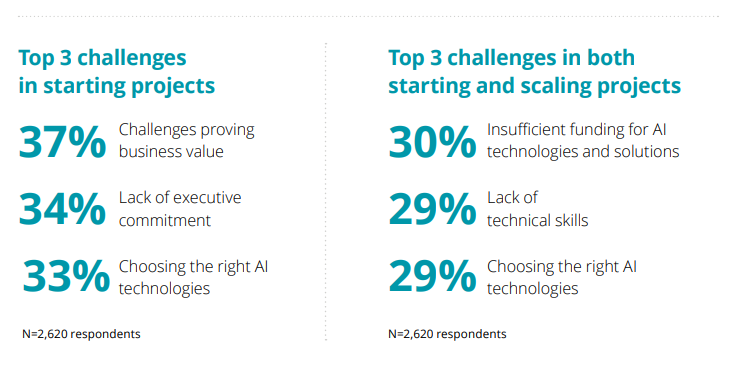
Culture is often key to success, and the workforce is increasingly optimistic about AI opportunities. Transformers were the most likely to report AI-ready cultural characteristics, such as: High cross-organizational collaboration; Workforce optimism for the possibilities of AI; Actively nurturing and retaining AI professionals.
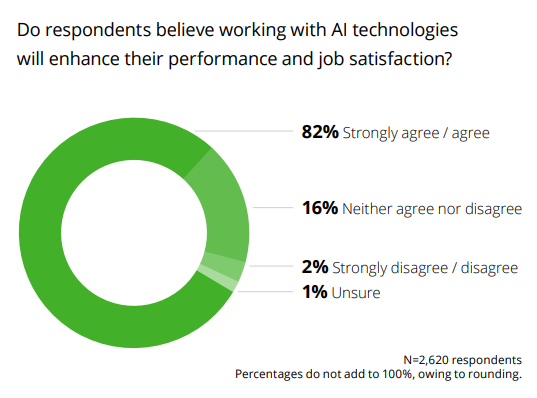
However, there remain gaps in harnessing increased workforce optimism. This growing workforce optimism may be the result of a shift in thinking in recent years. Many organizations have begun to realize the benefits of using AI to augment the workforce, rather than replace as many jobs as possible. In fact, a minority of surveyed organizations (30%) indicated a strong desire to automate as many jobs as possible.
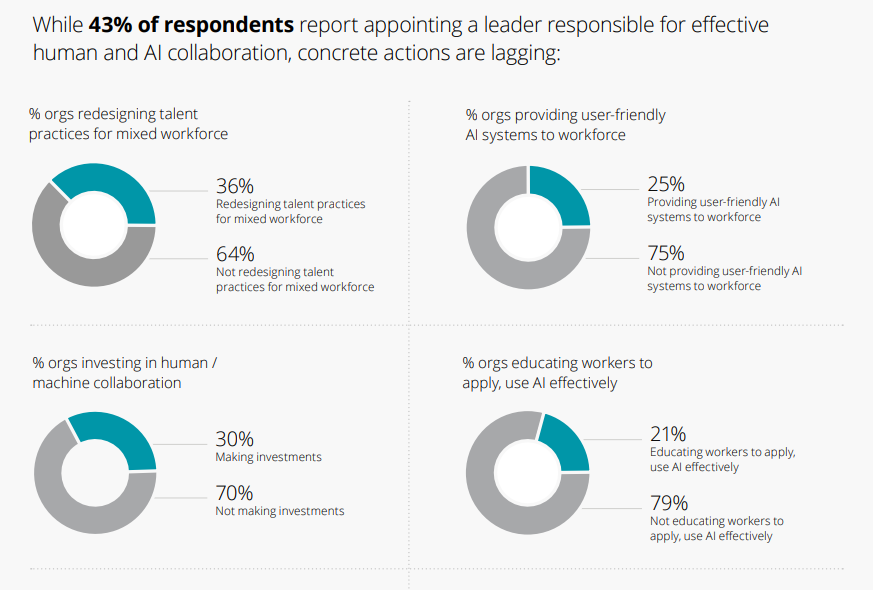
Despite that lack of progress in consistently adopting operational leading practices, some evidence from this year’s survey appears to reaffirm that high-outcome organizations are significantly more likely to adopt additional operational leading practices.
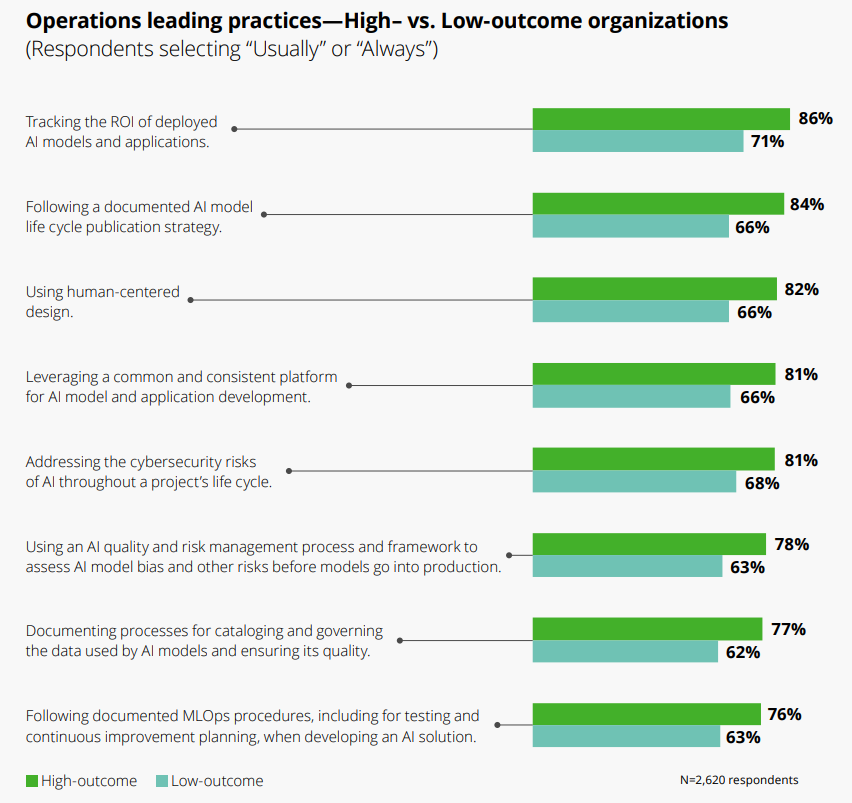
Managing these risks can have a major impact on an organization’s AI efforts. In fact, 50% of respondents cited management of AI-related risks as one of the top inhibitors to scaling AI projects. Despite such sentiments, only 33% of respondents have aligned their AI risk management with their organization’s broader risk management efforts. However, 33% of high-outcome surveyed organizations and 29% of low outcome surveyed organizations do engage outside vendors to independently audit their AI systems.
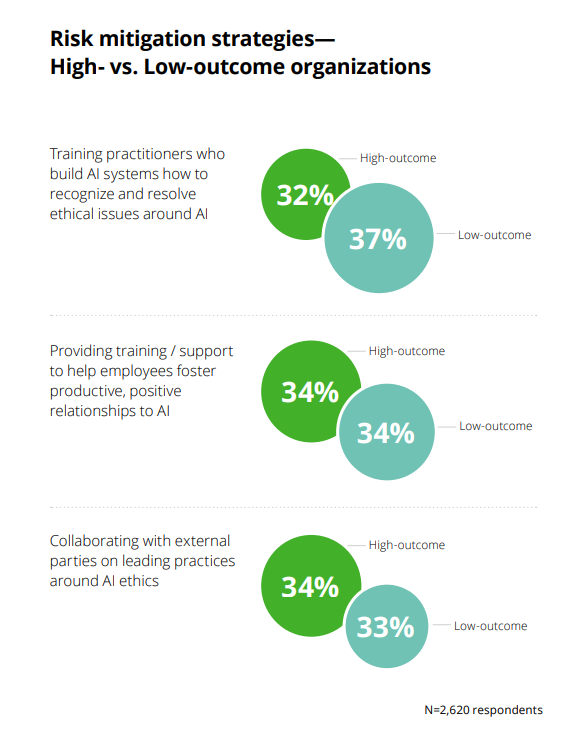
One of the major changes that AI presents to any organization is the need to plan technology and talent investments in tandem, looking at each as a source of critical skill sets—a unified human with machine workforce.
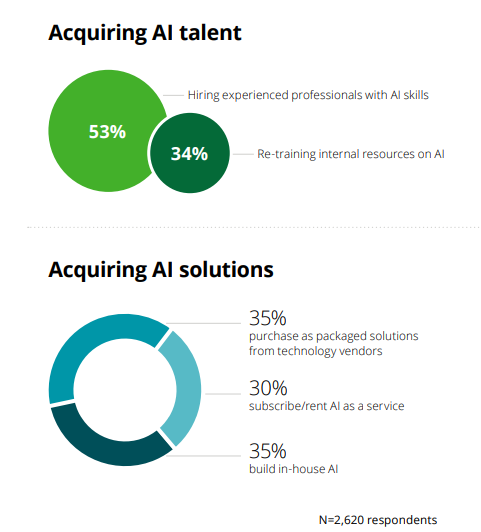
Consistent with this, it appears a significant majority of the survey respondents acquire AI as a product or service (65%)—rather than attempting to build their own AI solutions in-house (35%)—leaning particularly on off-the-shelf solutions at the beginning of their journeys. Co-development also remains a common practice for AI solutions, with organizations teaming up with their vendors to create customized systems and processes. Since AI is still an emerging technology, many vendors continue to offer kit-like platforms rather than fully baked solutions.
The consumer industry includes a vast array of business types, ranging from consumer products to hotels, restaurants and airlines. While they function very differently across the value drivers, all sectors are united by their focus on serving customers.
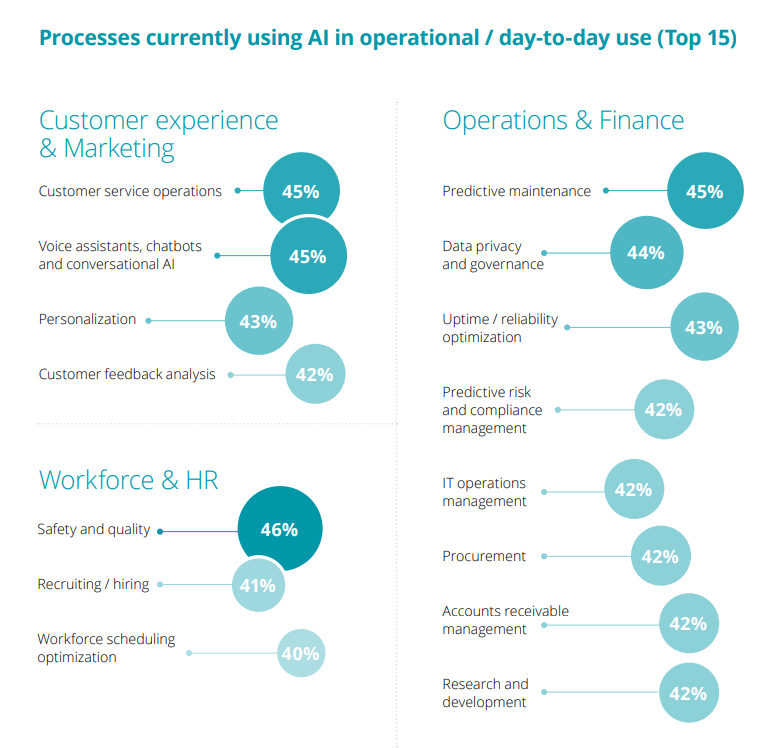
Within each sector use case adoption may shift significantly. In consumer products and manufacturing firms there appears to be a divide between smaller firms that struggle most with staff shortages and hiring skilled operators, and larger firms that struggle most with costs of inputs and managing costs across larger and more complex production processes. The former group tends to see the most success with bringing AI assistants to the shop floor in the form of virtual operator assistants, while larger firms tend to see better results from investing in AI-enabled value chain optimization to identify hidden opportunities and overlooked savings.
As we have watched these rapid shifts occur, we see the opportunities in present challenges. And yet, we have also seen how many business leaders set their sights too low—and thus fall short—of the enormous potential AI presents to us. Today’s race is no longer about adopting AI or automating processes for efficiency. It is now about realizing value, driving outcomes, and unleashing the potential AI holds to drive new opportunities for our businesses, for our employees and for our society at large. It is about cracking open the constraints of how we have done business before. We hope this report supports your business in not just realizing the potential of AI, but also in imagining how much further it can take you.
Source: Deloitte